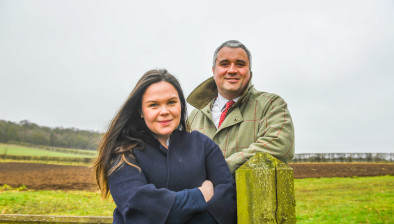Dumfries and Galloway Council’s Housing in the Countryside policy ‘can really deliver solutions’
 Dumfries and Galloway Council’s Housing in the Countryside policy is an “opportunity not to be missed” to improve the region’s future rural housing stock, Smiths Gore has said.
Dumfries and Galloway Council’s Housing in the Countryside policy is an “opportunity not to be missed” to improve the region’s future rural housing stock, Smiths Gore has said.
In it response to the council’s consultation on draft supplementary guidance, the chartered surveyors said the process can also put the region at the forefront of rural housing provision whilst at the same time protecting the countryside and built heritage.
The consultation, among other aspects, covers small building groups; ribbon development; affordable housing; development viability; severance of houses from agricultural holdings; retirement succession of viable farm holdings; rural brownfield sites; low carbon design; and the conversion of farm buildings.
In its comprehensive response, Smiths Gore says that not enough emphasis has been placed in the draft Guidance on differentiating between situations where ribbon development is unacceptable, and where it can be appropriate to the character of an area.
It should not be assumed that ribbon development has an adverse effect in all situations. In fact it can assist with the rounding off of settlements and create opportunities for small numbers of houses in the countryside giving housing opportunities for local people and supporting the services in villages and small building groups.
Smiths Gore added that there should be favourable consideration for the expansion of housing groups with affordable housing where there is a demonstrated and unmet need for such housing, and that consideration should be given for rural exceptions sites exclusively for affordable housing.
The firm highlights a number of specific aspects in relation to on-farm housing in its submission. For example recognising that retirement from a farm can be an issue where viable housing options for retirement are not available, and where subdivision of the farmhouse, forming an annex, or buying a house in the vicinity of the farming business may not be options.
Smiths Gore also suggests for practical reasons lowering the time bar of 25 years in relation to obsolescence of farm buildings to 10 years in order to create more brownfield site opportunities for future development.
However, Smiths Gore is critical of an aspect of the proposed guidance which states that, when applying for housing in remote areas, applicants will need to demonstrate that associated land management activity can support them as their main source of income. It regards this approach as misguided saying conversely that buildings in remote areas present real opportunities for development incorporating exemplary energy performance and design, and that working from home must be a practical consideration.
Angus Dodds, planning consultant, Smiths Gore, said: “This is an important process in establishing future guidelines for rural housing development in the region where a careful balance needs to be struck between meeting future housing need and safeguarding the region’s landscape and built heritage. It is clear however that Dumfries and Galloway have tried hard to produce more appropriate rural housing policies in this latest Plan and they should be congratulated for this.
“We hope that our comments on the consultation will be regarded as valuable and constructive and that we can see Dumfries and Galloway as being truly progressive in the area of rural housing delivery.”















